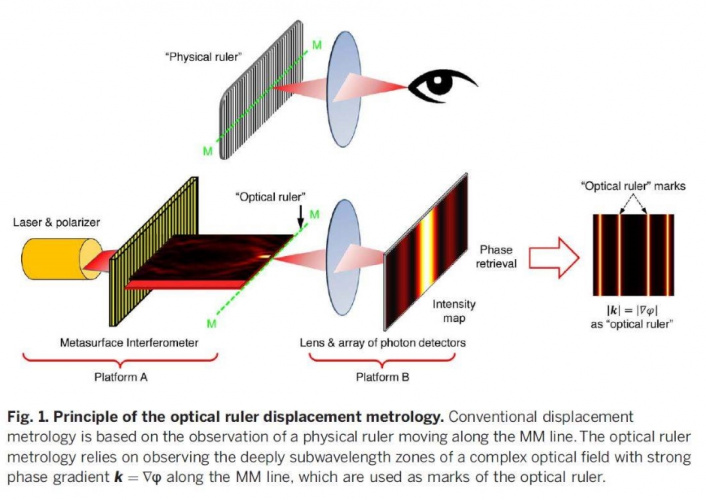
According to Nanyang Technological University (NTU Singapore), devices that use light to see objects, such as microscopes, have a fundamental limitation based on the laws of physics, which is their resolving power.
The smallest distance that optical devices can reliably image is equal to half the wavelength of the light used, or the “diffraction limit”. The diffraction limit is above 400nm, about half the wavelength of near infrared light and 250 times smaller than the width of a human hair.
Scientists are interested in observing objects like viruses and nanoparticles that range in size from 10 to 100nm, so an optical resolution of 400nm is insufficient. Currently, nanometre-scale measurements are made using indirect or non-optical methods, such as scanning electron microscopy, which are not always feasible, can be time-consuming and require costly equipment to operate.
However, an advance described in Science by Prof Nikolay Zheludev and Dr Guanghui Yuan at NTU’s School of Physical & Mathematical Sciences describes a new optical method that can measure displacements of a nanometre using near infrared light.
In a statement, NTU said that their theoretical calculations indicate that devices based on this method could measure distances down to 1/4000 the wavelength of light, to roughly the size of a single atom.
Their achievement was accomplished using a 100nm thick gold film with over 10,000 tiny slits cut into it to diffract laser light and to exploit an optical phenomenon called ‘superoscillation’, which occurs when a ‘sub-wavelength’ in a light wave oscillates faster than the light wave itself.
“Our device is conceptually very simple,” said Dr Yuan, a postdoctoral fellow at the Centre for Disruptive Photonic Technologies (CDPT). “What makes it work is the precise pattern in which the slits are arranged. There are two types of slits within the pattern, oriented at right angles to each other. When polarised laser light strikes the gold film, it creates an interference pattern containing extremely tiny features, much smaller than the wavelength of light.”
According to NTU, after this polarised light scatters from the device it produces two cross-polarised beams: one a superoscillatory “interference pattern” containing fast phase variation and the other a reference wave to detect the phase of the superoscillatory field.
From the phase, it is possible to calculate the superoscillation’s gradient, or ‘local wavevector’, which has a width 400 times narrower than the diffraction limit and can be used as a high-resolution optical ruler.
A hurdle that the NTU scientists had to overcome was that these tiniest superoscillations do not appear in the amplitude of the light wave, but in its phase. To map out the phase of the light field, the scientists had to devise a special technique that could compare the intensities produced by different polarisation states of laser light.
“This phase-sensitive technique is a major improvement over previous attempts to use superoscillation for optical measurement,” said Prof Zheludev, Co-Director of NTU’s The Photonics Institute.
“Earlier methods, developed by us as well as others, used a class of superoscillations that correspond to localised ‘hot spots’ in intensity. The advantage of hot spots is that they are easy to detect. Yet if the goal is to measure the shortest distances possible, phase superoscillations are much more suitable, due to their smaller size.”
“This method of optical measurement will be very useful in future, such as in the manufacturing and quality control of electronics, where extremely precise optical measurements are required, and to monitor the integrity of nano-devices themselves,” said Prof Zheludev, who also serves as co-director of the Optoelectronics Research Centre at Southampton University
The team plans to develop a compact version of their apparatus using optical fibres and to commercialise the technology as a new type of ultra-precise optical ruler.




April 1886: the Brunkebergs tunnel
First ever example of a ground source heat pump?